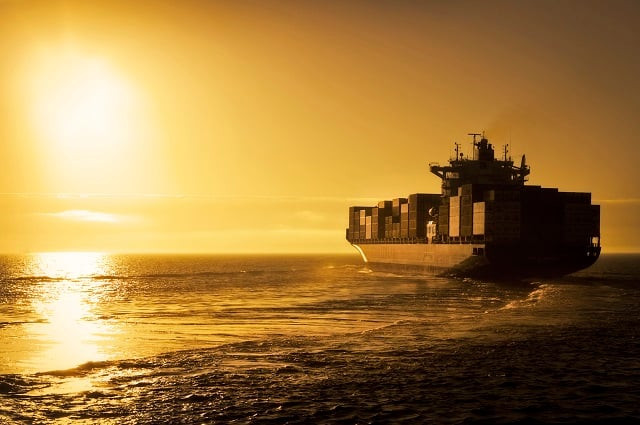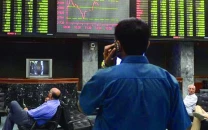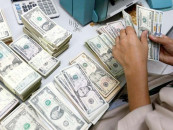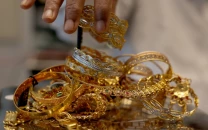Drop in imports sparks industrial slowdown fears in Pakistan
Adviser worried over low raw material imports; blames rupee fall, high interest cost

Representational image. PHOTO: REUTERS
“I don’t have exact figures, but imports of a lot of raw material are coming down, which makes me a little bit worried,” remarked Adviser to Prime Minister on Commerce Abdul Razak Dawood while responding to a question at a news conference on Tuesday.
He acknowledged that the reduction in industrial raw material import was not a good thing for the national economy. Several factors were behind the low imports, especially the reduction in auto sector’s production levels, he said.
The adviser listed three main causes which included rupee depreciation, higher interest cost and consumer resistance. “Consumers are not taking interest in different goods due to higher prices; it can happen anywhere in the world,” he said.
The adviser defended the meeting of businessmen with the army chief, saying it was held on the directives of Prime Minister Imran Khan. “What is the harm in meeting the army chief,” he asked.
The adviser revealed that the second phase of the free trade agreement with China would be implemented from December 1, 2019, adding that Chinese investment in the Special Economic Zones (SEZs) in Pakistan would benefit Beijing as well, paving the way for it to export its products at lower prices to the US.
“The best SEZ is in Faisalabad where the Chinese are more interested in investing in exporting units,” the adviser revealed.
The main concern of the Chinese was the full operationalisation of Gwadar Port, which was done. “It is now fully operational,” he said.
The adviser pointed out that the federal cabinet had approved the e-commerce policy, which would prove to be a milestone and help boost the national economy.
“The potential of software exports has not been fully tapped because we don’t have an online payment platform; Pakistan is a market of freelancers,” he remarked.
Dawood emphasised that the government was committed to increasing the country’s exports by removing all obstacles. “Significant measures have been taken and endeavours will continue for further promoting exports,” he said.
“I feel that our exports are pretty close to the targets,” he said, adding that the good thing was that the trade gap was improving, imports were going down and exports were rising. The adviser stressed that the Ministry of Commerce was focusing on narrowing the trade deficit and it had improved by 35% in the first quarter of current fiscal year 2019-20.
The trade deficit came down to $5.72 billion from $8.79 billion in the first quarter of previous year. Only in September alone, the trade gap contracted 24% over the corresponding month of last year.
According to the adviser, import compression measures had been successfully deployed and imports came down to $11.24 billion in July-September 2019-20 compared to $14.16 billion in the same quarter of previous fiscal year.
There was 21% contraction in imports in the first quarter and 24.58% in September 2019.
Exports had started picking up and grew 2.75% in the first quarter. Exports stood at 1,769 million in September 2019, a growth of 2.67% over exports of $1,723 million in the corresponding period of last year.
According to provisional data, main commodities of exports in the first quarter were rice ($471.1 million, 50.1% growth), men’s garments ($886.1 million, 7.3% growth), cotton T-shirts ($123 million, 57.6% growth), copper and copper products ($91.8 million, 144.7% growth), meat ($71.6 million, 53.8% growth), medical instruments ($108.1 million, 20.3% growth), leather apparel ($159.7 million, 8.8% growth), fruits and vegetables ($143.2 million, 17.7% growth), fish and fish products ($79.2 million, 8.7%).
Pakistan’s exports have grown in traditional as well as non-traditional markets. “Our exports have gone up in Saudi Arabia by 51%, the UAE by 23%, the Netherlands (17%) and China (14%).
Published in The Express Tribune, October 16th, 2019.
Like Business on Facebook, follow @TribuneBiz on Twitter to stay informed and join in the conversation.


















COMMENTS
Comments are moderated and generally will be posted if they are on-topic and not abusive.
For more information, please see our Comments FAQ